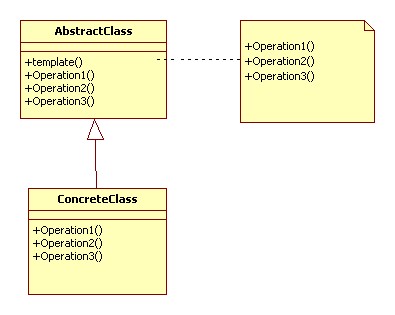要想实现 模板方法模式,涉及到两个角色:1.抽象模板角色---父类(抽象的) 2.具体模板角色---子类
就是父类和子类继承的表现
抽象模板角色这个类里 定义了几个抽象方法,供子类去实现具体操作,还定义了一个模板方法(template),以告诉子类去实现这些方法要有一定的顺序去执行, 这种设计模式在JUnit中的setUp(),runTest(),tearDown()体现了,
源码:
public void runBare() throws Throwable { setUp();
try { runTest(); //而这里面又涉及到 适配器模式 }
finally { tearDown(); } }
Template Method UML图:

代码演示:
AbstractClass.java
- package com.template ;
- public abstract class AbstractClass
- {
- //如果把类AbstractClass定义成接口,实现不了以下操作
- public void template()
- {
- this.operation1() ;
- this.operation2() ;
- this.operation3() ;
- }
- public abstract void operation1() ;
- public abstract void operation2() ;
- public abstract void operation3() ;
- }
ConcreteClass.java
- package com.template ;
- public class ConcreteClass extends AbstractClass
- {
- public void operation1()
- {
- System.out.println("operation-1") ;
- }
- public void operation2()
- {
- System.out.println("operation-2") ;
- }
- public void operation3()
- {
- System.out.println("operation-3") ;
- }
- }
Client.java
- package com.template ;
- class Client
- {
- public static void main(String[] args)
- {
- AbstractClass ac = new ConcreteClass() ;
- ac.template() ;
- }
- }